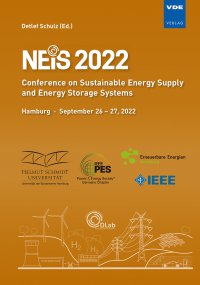Multi-dimensional model for electrical, thermal and mechanical simulation of a Lithium-ion Cell
Conference: NEIS 2022 - Conference on Sustainable Energy Supply and Energy Storage Systems
09/26/2022 - 09/27/2022 at Hamburg, Germany
Proceedings: NEIS 2022
Pages: 8Language: englishTyp: PDF
Authors:
Fill, Alexander; Bubeck, Luis; Knauer, Diego; Hemmerling, Jessica; Birke, Kai Peter (University of Stuttgart, Institute for Photovoltaics, Chair for Electrical Energy Storage Systems, Stuttgart, Germany)
Abstract:
Multi-dimensional cell models are an increasingly used tool in battery development and operation monitoring. Lithium-ion cells show current density and temperature gradients inside, resulting in location-dependent degradation phenomena. Multi-dimensional models can support to understand these effects in a better way to detect these effects during operation and thus to optimize the cell/battery design as well as the operating window accordingly. In this paper, a cell model is presented which resolves the current density, potential and temperature distribution within the individual cell layers. In addition to a discretization of the cell height and width, gradients within the electrode thickness are also determined. The model is composed of a coupled electrical, thermal and mechanical submodel. The coupling of these three submodels is crucial, as there are correlations between electrical, thermal and mechanical quantities. Only by this model interaction valid and precise simulation results regarding degradation effects in the cell are possible. To resolve the volume change and mechanical stresses, the Li-concentration in the electrode particles is estimated using a particle diffusion model. Simulations show the dependency of local current density, temperature and Li-concentration peaks to the load profile. The inhomogeneity of the internal cell states increases disproportionately with the current load. Regions close to the cell tabs exhibit elevated temperatures. Electrode particles close to the separator show increased Li-gradients, which can lead to increased Li-plating and Solid Electrolyte Interface (SEI) growth at these areas.


